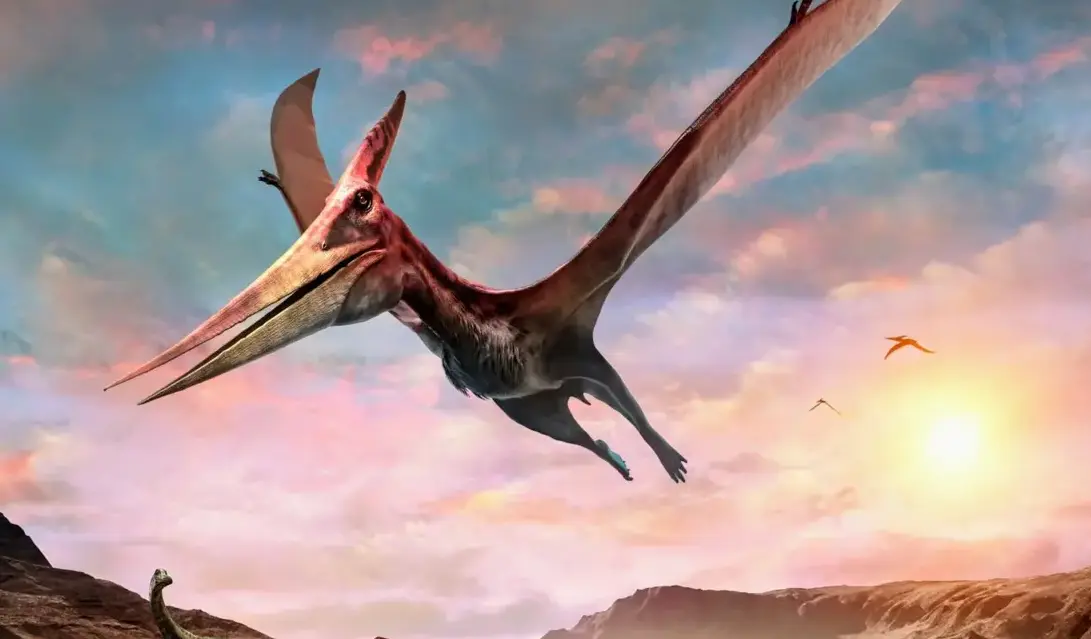Using modern methods, a group of researchers examined the soft tissues of the preserved tail blades of early pterosaurs (rhamphorhynchus) and discovered an unusual set of structures inside. Scientists realized that the structure of the blade allowed it to withstand the oncoming wind flow, and pterosaurs were better at maneuvering and maintaining balance.
The first vertebrates to master flight were pterosaurs. They appeared approximately 220 million years ago in the upper part of the Triassic period (251.9-201.3 million years ago) and acquired many unusual features during their long evolutionary history. Some flying lizards reached gigantic sizes – hothopteryx and aramburgiana, which are considered the largest, their wingspan reached 10-11 meters, others climbed trees, others flew over the oceans and ate fish.
Early pterosaurs were distinguished by long rigid tails that ended in a paddle often made of soft tissues. There are various opinions about why they need this. There is a version that pterosaurs used oars to attract partners, but many researchers agree on its mechanical function. Most likely, this feature helped flying lizards to maneuver or maintain balance in flight. However, the active change of the shape of the tail blade in different species indicates the importance of such an arrangement in the evolution of the animal.
An international group of paleontologists decided to study the internal structure of the tail blades of early pterosaurs (rhamphorhynchus).Rhamphorhynchus). An earlier study from the 19th century suggested that these tissues probably contained flexible cartilaginous arches that may have helped keep the blade stable in flight. This time, scientists used modern methods to analyze the structure of the preserved blades and found two different groups of structures inside. Details of the research are published on the preprint website bioRxiv.
Experts selected 100 fossilized samples from the soft tissues of the tail Rhamphorhynchus muensteri It is found in the Solnhofen limestones. Paleontologists examined the existence of the shovels with the help of ultraviolet light – four exceptionally good specimens were selected from them, which were then examined by laser-induced fluorescence (LIF). The method eliminates photons from the material by illuminating areas that remain dark during ultraviolet irradiation. Previously, it was possible to determine, for example, the flight type of an extinct bird. sapeornis.
The blades of the selected rhamphorhynchs had a length of 7-7.5 centimeters, which was slightly more than 20 percent of the total length of the tail. Experts discovered more than ten groups of flat structures in these diamond-shaped appendages standing perpendicular to the tail (17 of them were counted in one sample).
Their thickness (0.6-1 millimeter) and possibly hollow structure suggested to the researchers that they were rods. In a Rhamphorhynchus, paleontologists also detected several thin, almost horizontal filaments running through vertical ones, forming a erected lattice.
The authors of the article concluded that these two groups of structures form a grille that prevents the tail wing from flexing in the event of oncoming air flow. As you change direction towards the blade, it is important to remain flexible and rigid to resist stretching. This allowed pterosaurs to better control their flight with the help of their tails – the rods could withstand the load during sudden movements.
Later varieties of flying lizards abandoned the tail blades altogether, shifting the center of mass towards the head and transferring control to the wings and the crown of the skull.
Source: Port Altele
